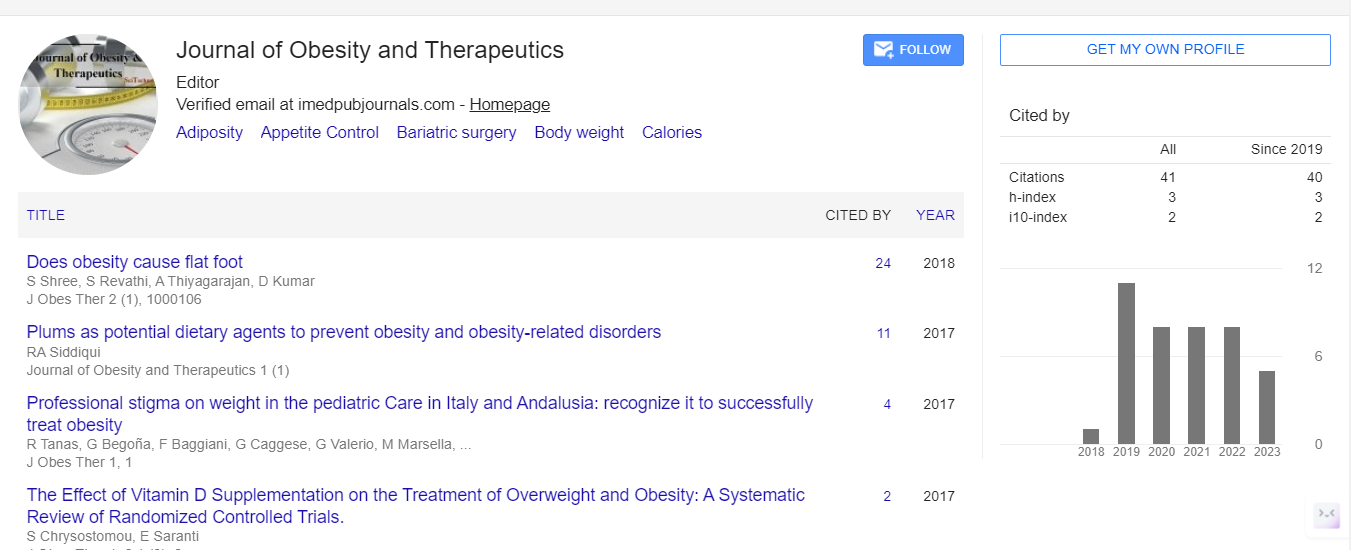Editorial, Jot Vol: 3 Issue: 4
Childhood Obesity 2019: Validation of Diabetes Medication adherence scale in the Lebanese population - Amal Al-Hajje - Lebanese University
Amal Al-Hajje,
Lebanese University, Lebanon
Abstract
Keywords: Obesity, Weight Management
Introduction & Aim: Diabetes mellitus is a major global public health problem and lack of adherence to medication causes suboptimal glycemic control increasing complication rates, costs and mortality. The objective of this study was to validate the Diabetes Medication Adherence Scale (DMAS-7) developed to evaluate the adherence to oral antidiabetics in Lebanon, determine its concordance with another validated scales and to assess adherence rates and factors. Methods: A descriptive cross-sectional study was conducted on a sample of Lebanese diabetic patients selected from private and hospital clinics located mainly in Beirut, Lebanon. Data was collected from adults aged above 18 years, diagnosed by type 2 diabetes and taking an oral anti- diabetic for at least 6 months using a questionnaire. The level of adherence was measured using the DMAS-7 and the Lebanese Medication Adherence Scale (LMAS-14). Bivariate and multivariate analyses were conducted, and the scale was validated in terms of reliability, predictive ability, and construct validity using SPSS version 19. Results: Out of 300 eligible patients, the rate of adherence was only 33.7% using DMAS-7. This suboptimal adherence level was significantly associated to many factors including monthly medication cost, diet follow-up, HbA1c, postponing doctors’ visits, feeling of treatment burden and inefficacy, number of medications per day, etc. Other measures of validity showed good reliability shown by Cronbach alpha=0.627, good predictive value measured by the area under the ROC curve = 0.675 (p-value<0.001), good construct validity with LMAS-14 scale (Spearman’s rho = 0.846; Cohen’s kappa = 0.711). DMAS-7 and LMAS-14 were correlated (ICC average measure = 0.675; p-value <0.001) which shows a good concordance and increases the validity of the DMAS-7. Logistic regression revealed that having an optimal glycated hemoglobin Hb1Ac percentage (OR=0.779; 95% CI=0.671-0.903; p=0.001), performing regular physical activity (OR 2.328; 95% CI=1.347- 4.02; p=0.002) and following diet program (OR 3.294; 95% CI 1.483- 7.319; p=0.003) significantly increased medication adherence. However, postponing doctors’ visit (OR 0.453; 95% CI 0.209-0.985) was significantly associated with poor adherence. The DMAS score was found to be a significant predictor of HbA1c control (p-value<0.05) where an increase of patients’ adherence to his oral antidiabetics calculated by DMAS results in a 2-fold higher probability that the HbA1c becomes controlled (OR=2.006). The level of adherence was measured using the DMAS-7 and the Lebanese Medication Adherence Scale (LMAS-14). Bivariate and multivariate analyses were conducted, and the scale was validated in terms of reliability, predictive ability, and construct validity using SPSS version Conclusion: The DMAS-7 is a reliable and valid instrument for assessing adherence to medications that can be used in order to assess adherence and help achieve better glycemic outcomes.
 Spanish
Spanish  Chinese
Chinese  Russian
Russian  German
German  French
French  Japanese
Japanese  Portuguese
Portuguese  Hindi
Hindi 